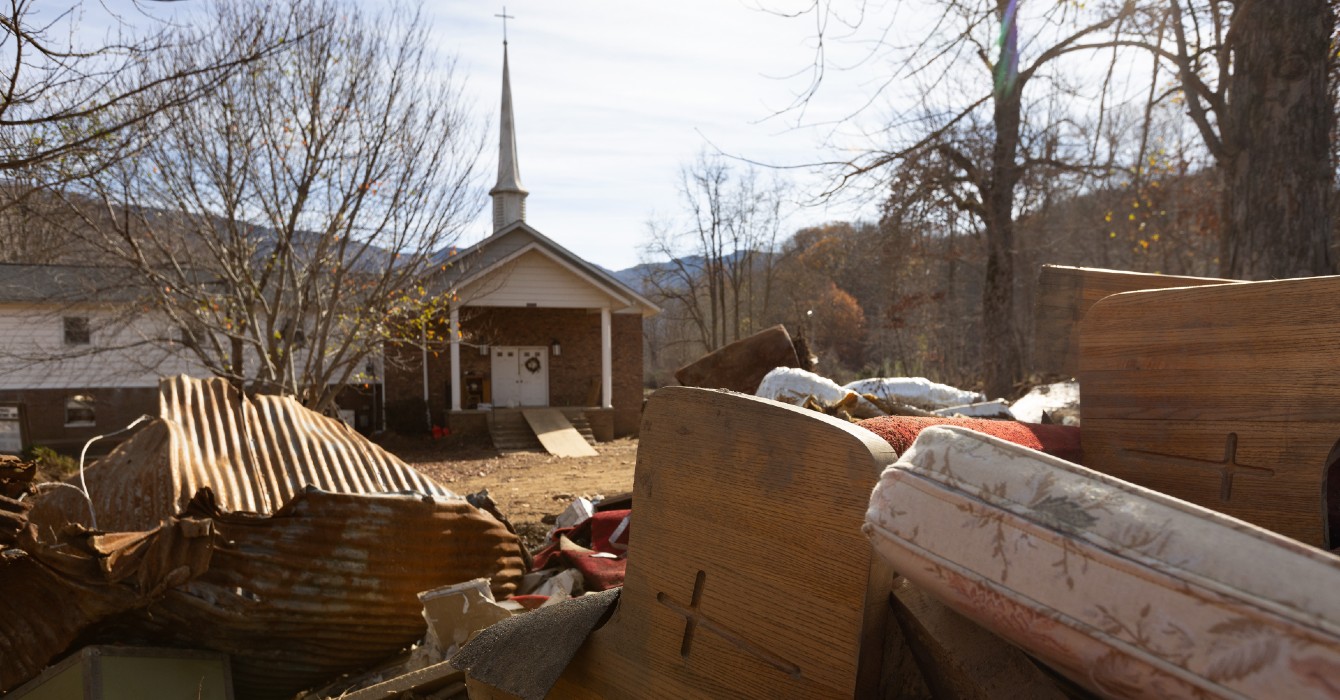On a recent visit to Notre Dame in Paris, I was reminded of the power art wields over our imaginations and memories. The cathedral was begun in the mid-12th century, its architects assuming that the majority of folk who worshipped there would be illiterate. So the building was designed as catechism, teaching the faith through stone, sculpture and stained glass to people who would never themselves read the Scriptures.
Christ enthroned in glory sits above the main entrance, the last judgment depicted in vivid detail beneath his feet. The blessed, gazing up adoringly at their Lord, are being led to heaven by an angel; the less fortunate head off to a quite different place, escorted by a sculpted demon. The message could not be clearer: this is the future that awaits humanity, and inside this church one may discover how to join the company of the blessed. Those unable to read got the message; the sculpture is unforgettable.
The art in our local churches exerts subtle, catechetical power, even in our information-drenched age, the stained-glass windows especially potent. In many of them the images are, for want of a better term, Photoshopped.
Everyone is clean, their expressions exuding holiness. The ultrabiblical robes never show dirt or perspiration stains. Even the sheep are bleached and blow-dried. John the Baptist sometimes looks a bit outré, but scarcely as unkempt and hygienically lax as the Gospels attest.
In Protestant churches where there is a resurrection window, the risen Christ is usually physically perfect, no wounds in hands or feet, contradicting the Gospel of John. This is not only unbiblical but spiritually subversive.
Subversive in that we are formed by constant exposure to these images, whether we are aware of it or not, and the world they depict never existed. The newly raised Christ still had wounds, because incarnation was costly to God, and Jesus’ journey through human history left him indelibly altered. In the new Jerusalem, his scars bear witness to the chaos and struggle of the world. So says the Gospel of John.
Pastors live out their vocations in this chaotic place. In the Duke Clergy Health Initiative, we remind them in worship and other ways that incarnation intersects their lives, not only during the great festivals of Christmas and Easter, but also in the ordinary places, where most ministry occurs.
We invite them to look at the day-to-day work of their callings through lenses that demythologize the biblical world, taking Christ out of the stained glass and making him a true companion to parish clergy. We invite pastors to see Jesus with -- as the Rev. Claire Wimbush, an Episcopal priest, says -- “the dirt of Galilee deeply embedded in the pores of his skin.”
Re-imagining Jesus this way is not only historically and theologically appropriate but also curative of the distortions that threaten our spirits by encouraging us to remember Jesus as he never was, and as he is not now. The one enthroned in glory still carries bits of Galilee in his pores, and vivid reminders of his time among us in his hands, feet and side.
This is the Lord of the church, the one who accompanies every pastor in her visits with the uncomprehending Alzheimer’s patient and in her bedside presence with the dying. This is the one who stands beside her in the pulpit and at the communion table. This is the one who co-endures the harsh, unfair criticism of the angry parishioner who, heedless of his baptism vows, enjoys wounding the church.
This is the Jesus who bears the scars. This is the flesh-and-blood Christ who invites the pastor to go alone to a mountaintop or to put out from shore in the boat for a while, away from all the demands, to care for her own soul and to be nourished by the manna of silence.
Our invitation to pastors to refresh their imaginations with these perspectives on incarnation has been difficult for some, liberating for others and, frankly, disquieting to a few. But as John reminds us in recounting the conversation between Jesus and Nicodemus, it’s hard to see the kingdom unless you view it from above (John 3:3).
That new vantage point can be challenging. From it you can see the dirt on the back of Jesus’ neck. And that is John’s good news.








